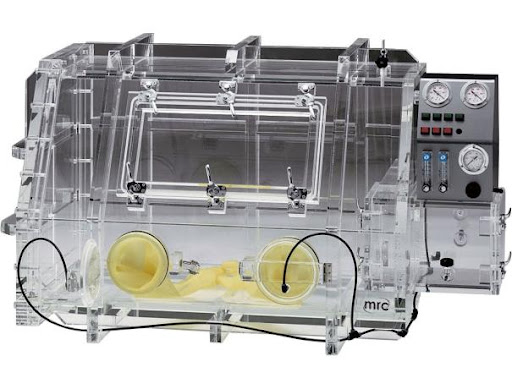A laboratory glove box is an essential tool for scientists and researchers working with hazardous or sensitive materials. The glove box provides a controlled environment to ensure the safety and integrity of the materials and the experiment. However, using a glove box requires proper training and understanding of the equipment. In this article, we will provide a step-by-step guide on how to use a laboratory glove box, including setting up the equipment, preparing materials, and conducting experiments.
Understanding the Laboratory Glove Box
A laboratory glove box is a sealed container with gloves attached to allow users to manipulate materials inside the box without exposing them to outside air. The glove box is typically made of clear polycarbonate or acrylic to allow for easy visualization of the materials inside. A glove box can be used for a variety of applications, including handling of hazardous chemicals, conducting experiments with sensitive materials, and manufacturing of electronic components.
Safety Precautions
Use of this laboratory equipment can provide a safe environment for working with hazardous or sensitive materials, but proper safety precautions must still be taken. Before using the glove box, make sure you have received proper training on its operation and are aware of the risks associated with the materials you will be handling. Always wear appropriate personal protective equipment, such as gloves, goggles, and lab coats.
Preparing the Glove Box
Assembling the Glove Box
Before using the glove box, it must be properly assembled. Follow the manufacturer’s instructions for assembly, which may include attaching the gloves, installing filters, and connecting the gas supply.
Installing the Gloves
Gloves are attached to the front of the glove box to allow users to manipulate materials inside the box. Follow the manufacturer’s instructions for installing the gloves, which may involve attaching them to the glove ports with clamps or adhesives.
Connecting the Gas Supply
Many of them require a gas supply to maintain the internal atmosphere. Follow the manufacturer’s instructions for connecting the gas supply, which may include installing a regulator and connecting the gas line.
Checking the Pressure
Before using, check the pressure inside to ensure it is within the recommended range. Most glove boxes have a pressure gauge or digital readout that displays the pressure inside the box. If the pressure is too high or too low, adjust the gas supply or contact the manufacturer for assistance.
Preparing Materials
Material Compatibility
Before using, it is essential to ensure that the materials you will be handling are compatible with the glove box materials and the gas atmosphere inside. Some materials may react with the glove box or the gas supply, causing contamination or other hazards.
Proper Packaging and Labeling
Materials should be properly packaged and labeled before placing them inside. Use appropriate containers, such as plastic bags or glass vials, and label them clearly with the contents and any relevant safety information.
Sterilization and Decontamination
Depending on the application, it may be necessary to sterilize or decontam
Conducting Experiments
Once the glove box is properly set up and the materials are prepared, it’s time to start conducting experiments. Here are some important steps to follow:
Testing Equipment
Before using for an experiment, it’s important to test the equipment to ensure that it’s working properly. Perform a leak test to check for any leaks in the glove box or the gas supply. Also, check the pressure and make sure that the atmosphere inside the box is stable and consistent.
Transferring Materials
When transferring materials into the glove box, take care to avoid introducing contaminants. Use a transfer chamber or a pass-through to transfer materials into the box. Use tools such as forceps, tweezers, or spatulas to manipulate the materials inside the box.
Sealing and Releasing Materials
After using the materials, it’s important to seal them properly before removing them from the glove box. Use appropriate containers and label them with the contents and any relevant safety information. To release gas from the glove box, follow the manufacturer’s instructions, which may involve purging the box with an inert gas or using a vacuum pump.
Maintenance and Cleaning
To ensure that the glove box is working properly and to prevent contamination, it’s important to perform regular maintenance and cleaning. Follow the manufacturer’s instructions for cleaning and disinfecting the glove box, which may involve wiping down the surfaces with a disinfectant or autoclaving the gloves. Also, make sure to replace the filters and check the gas supply regularly to ensure that the glove box is working properly.

